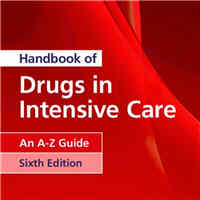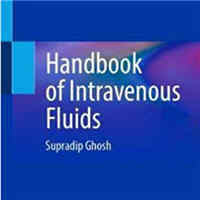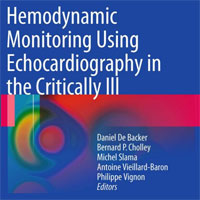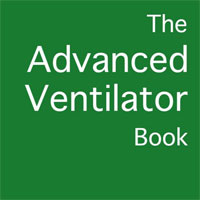Tag: resuscitation
R.E.B.E.L. EM – Fluid Responsiveness and the Six Guiding Principles of Fluid Resuscitation
Fluid resuscitation is a crucial aspect of emergency and critical care. Since the advent of the concept of early goal-directed therapy, we have placed a huge emphasis on aggressive fluid resuscitation in patients with severe... read more
Early Hemorrhage Control and Management of Trauma-induced Coagulopathy
Trauma resuscitation should focus on early goal-directed therapy with use of viscoelastic hemostatic assays while initially applying a ratio 1:1:1 driven transfusion therapy (with red blood cells, plasma and platelets) in... read more
Predictors, Prevalence, and Outcomes of Early Crystalloid Responsiveness Among Initially Hypotensive Patients With Sepsis and Septic Shock
Two in three hypotensive sepsis patients were responsive to initial fluid resuscitation. Heart failure, hypothermia, immunocompromise, hyperlactemia, and coagulopathy were associated with the refractory phenotype. Fluid resuscitation... read more
Training Approaches for the Deployment of a Mechanical Chest Compression Device
Pit-crew training, compared with standard training, did not improve team deployment of a mechanical chest device in a simulated cardiac arrest scenario. Twenty teams participated in this study, each comprising three clinicians.... read more
Physician Genders and the Likelihood of ICU Admission in Hospital with Restricted ICU Bed Capacity
Despite the evidence that the patient gender is an important component in the intensive care unit (ICU) admission decision, the role of physician gender and the interaction between the two remain unclear. We demonstrated... read more
The Effect of 6% Hydroxyethyl Starch (130/0.4) On AKI in Pediatric Cardiac Surgery
We have evaluated the effect of a colloid solution on acute kidney injury in paediatric cardiac surgery. A total of 195 patients were randomly divided into an hydroxyethyl starch group and a control group. In the starch group,... read more
Prompt Administration of Antibiotics and Fluids in the Treatment of Sepsis
We conclude that antibiotic therapy is highly time sensitive, and efforts should be made to deliver this critical therapy as early as possible in sepsis, perhaps extending into the first point of medical contact outside the... read more
The ADRENAL Trial: Steroids in Septic Shock
Randomized clinical trials evaluating the efficacy of adjunctive corticosteroids in septic shock have shown conflicting evidence of clinical relevance. Two trials in particular looked at lower dose hydrocortisone (200mg/day)... read more
Acute Kidney Injury in Sepsis
Acute kidney injury (AKI) and sepsis carry consensus definitions. The simultaneous presence of both identifies septic AKI. Septic AKI is the most common AKI syndrome in ICU and accounts for approximately half of all such... read more
Initial Crystalloid Resuscitation in Sepsis and Septic Shock
Ludwig Lin, MD, speaks with Daniel E. Leisman, BS, about the article, "Patterns and Outcomes Associated With Timeliness of Initial Crystalloid Resuscitation in a Prospective Sepsis and Septic Shock Cohort," published in Critical... read more
The EM Educator Series: Sepsis in the ED
These posts provide brief mini-cases followed by key questions to consider while working. The featured questions provide important learning points for those working with you, as well as vital items to consider in the evaluation... read more
Patient Experiences of Trauma Resuscitation
In this qualitative study that included semistructured interviews and video observations of trauma resuscitation, patients drew satisfaction from trauma team members' demeanor, expertise, and efficiency and valued clear... read more
Guidelines for Point-of-Care Use of Transesophageal Echocardiography in Cardiac Arrest Resuscitation
In patients with cardiac arrest, transesophageal echocardiography (TEE) may provide greater benefits than transthoracic echocardiography (TTE) for imaging, diagnosis, and prognosis, according to a review paper published in... read more
Post Resuscitation Management of Cardiac Arrest Patients in the Critical Care Environment
There is a clear relationship between evidence-based post resuscitation care and survival and functional status at hospital discharge. The Australian Resuscitation Council (ARC) recommends protocol driven care to enhance... read more
Intra-Abdominal Hypertension and Abdominal Compartment Syndrome
Intra-abdominal hypertension (IAH) and abdominal compartment syndrome are increasingly recognized in both medical and surgical critically ill patients and are predictive of death and the development of acute kidney injury.... read more
Tissue Edema, Fluid Balance, and Patient Outcomes in Severe Sepsis
Severe sepsis and septic shock remain among the deadliest diseases managed in the intensive care unit. Fluid resuscitation has been a mainstay of early treatment, but the deleterious effects of excessive fluid administration... read more
Causes for Pauses During Simulated Pediatric Cardiac Arrest
Pauses in cardiopulmonary resuscitation occurred frequently during simulated pediatric cardiac arrest, with variable duration and underlying causes. A large percentage of pauses were greater than 10 seconds and occurred more... read more
Ventilation Rate During Adult CPR with Tracheal Tube
The optimal ventilation rate during cardiopulmonary resuscitation (CPR) with a tracheal tube is unknown. A new systematic review finds that a ventilation rate recommendation of 10 min-1 during adult CPR with a secure airway... read more
Reducing Brain Injury After Cardiac Arrest
Therapeutic hypothermia (TH) (32-34°C for 24 hours) should be mandatory practice for patients who are comatose after being resuscitated from out-of-hospital cardiac arrest, if the initial cardiac rhythm is either pulseless... read more
Recent Developments in Management of Critical Burn Injuries
Recent reports emphasize the dangers of over resuscitation in the setting of burn injury. No new medical therapy for inhalation injury has been generally adopted, but new standards for description of burn-related infections... read more
Resuscitating Sepsis – How I do it after Albios
Watch "Resuscitating Sepsis - How I do it after Albios" by Luciano Gattinoni.... read more
The Complexities of Intravenous Fluid Research: Questions of Scale, Volume, and Accumulation
Despite near ubiquity, information regarding fluids consumption at a health care systems level, and patient exposure at an individual level, is surprisingly limited in the medical literature. The epidemiology of the foundational... read more









